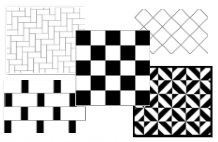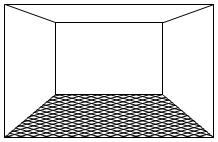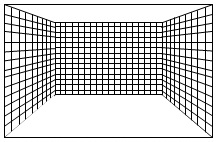- Home
- Tile Patterns
Tile Patterns
One day I realised how many different tile patterns I’ve collected (view the gallery). Now, it’s true that we’re straying a little bit into the interior design space but I figure that if a contractor is going to install something as part of the build, then it’s probably helpful to cover it.
We’ll be looking at floor tiling patterns and wall tiling patterns, but first let’s deal with the different elements that are up for consideration when figuring out the tile patterns for your home.
These are scale, shape, spacing, color and surface finish.
Scale for tile patterns
Think about how the size of the tile will work with the size of the space you are tiling. Will the tiled surface be observed up close or further away? If we think about the floor, you observe the floor directly underneath you from the height of your eyes, As you look further around the room, the distance increases. If we consider the wall our eyes are much closer to the tile in our shower or on our kitchen back-splash.
Generally speaking tiles of a large size are used on the floor and those of a small size are used on the wall. But it only takes a few minutes looking at interior design pictures to realise that there really are no rules. You can choose to decorate your bathroom walls with large format wall tiles and tile the floor with in one inch mosaic tiles.
Tile shape
The tiling designs on these pages are generally organised by shape. I try not to use jargon, but here’s a few terms that come up again and again when I’m discussing the tile patterns.
Tiling – If the design is made up of all one shape it is a tiling. You'll be surprised at the number of tiling patterns you can create with a tile of one shape by varying the off-set between each row of tiles.
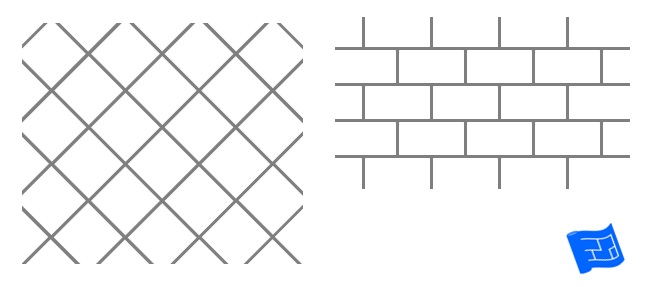 Some examples of tiling - where the same shape is used to create the design
Some examples of tiling - where the same shape is used to create the designTessellation – If the design uses more than one shape the pattern is a tessellation.
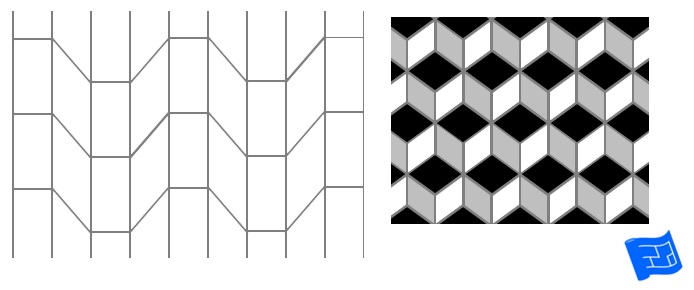 Some tesselation examples where more than one shape is used to create the pattern
Some tesselation examples where more than one shape is used to create the patternTile spacing
You have a choice to make about how much space you want to have between the tiles in your tile design. What impact does the spacing in between the tiles have on the design that you’ve chosen? The material that goes in between tiles is called grout. The color of the grout can also have an impact.
Tile color
You can see from some of the examples above just what an impact tile color can have, especially when you work two or three colors into the design.
There's also the color of the grout to consider. White or grey are the usual colors but grout is available in lots of different colors.
Color tiling – This is the name I give to designs that are made up using one tile shape in two different colors where cuts are made in the tile and the shapes arranged into a design.
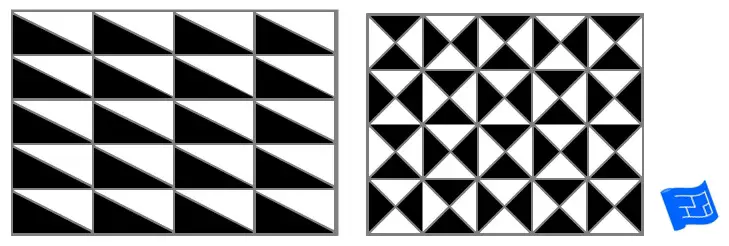 Cut tile examples where tiles of one shape, and different colors are used to create the design
Cut tile examples where tiles of one shape, and different colors are used to create the designSurface finish
It’s important to use a tile that’s up to the job you need it to do.
There are several elements that are important about the surface finish of a tile:
How hard wearing the surface is – This is particularly important for high traffic areas of floor tile. Many countries have a system to indicate how hard wearing a tile is.
How slippery the surface is - For example, large, smooth tiles are not ideal for the bathroom because they will be very slippery when wet. Tiles with texture, or tiles that have a grout line or two under the average foot will avoid slips in the bathroom.
How easy it is to clean - There are lots of tiles on the market that are slightly porous, and therefore pick up and hold on to the dirt. They can be sealed to solve this problem. Always ask or experiment with how easy a tile is to clean before you decide to use it in your home.

A cautionary tale about tile selection
One of the homes I lived in had a very modern look and we moved in just after it had been renovated. All the bathrooms had grey inch square (2.5cm) mosaic tile with reasonably thick white grout, say 1/10 inch (2.5mm). The look was great and very much in keeping with the modern décor vibe of the house. But they were a nightmare to clean. The tiles turned out to be unsealed and slightly porous so they held onto the dirt and the bright white grout gradually turned a shade of grey.
Real Life Tile Patterns
There's nothing like a few real life images to get you inspired about your tiling design patterns. Have a think about what part scale, shape, spacing and color play in these designs.
More Tile Patterns for you...
You might find these other pages on tile patterns useful.

